Citroën ë-C3 review: at under £22,000 this electric car is cheap as well as a cheerful
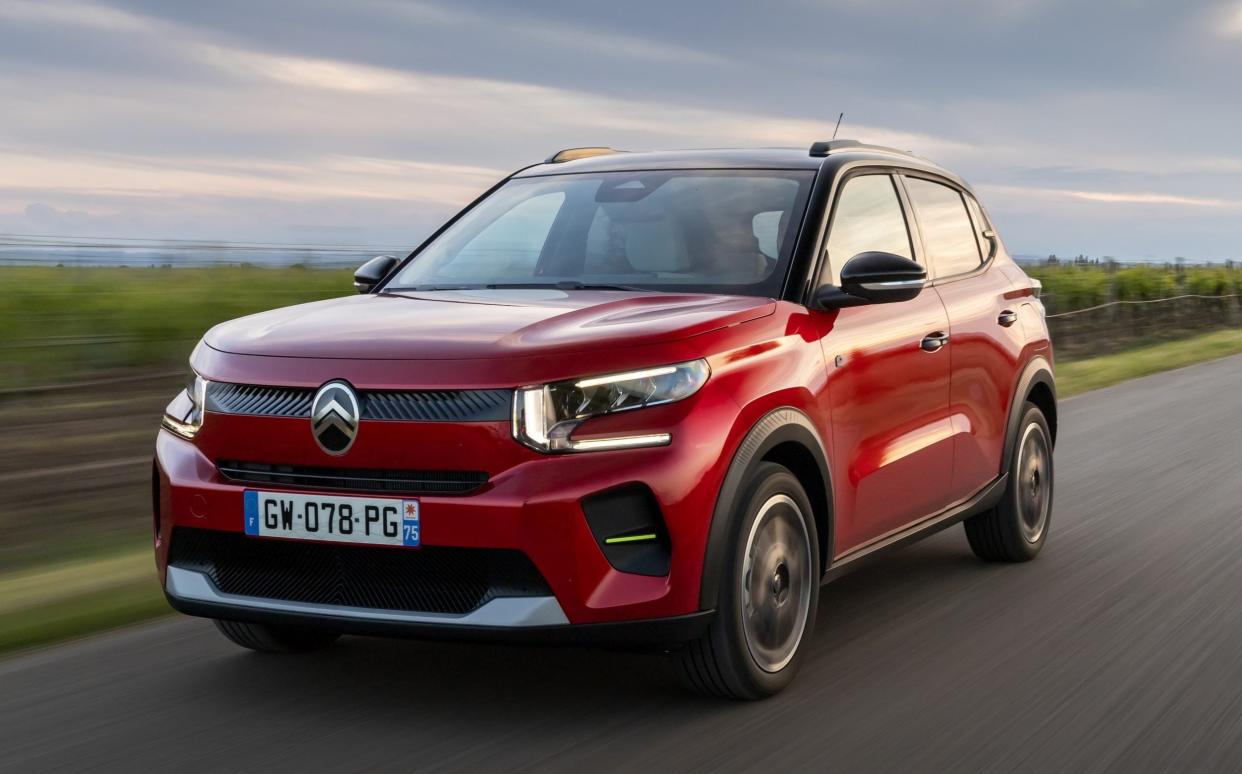
The death of the small car has been widely reported in The Telegraph and elsewhere. Increasingly onerous safety and environmental legislation, as well as the costs of developing and fitting battery technology, were always going to put paid to the type of car that for many – the youngest and oldest drivers, the less well off, those living in rural communities – represent lifelines of individual mobility.
That was then, and though the new Citroen ë-C3 is a rather more nuanced small-car survival story than it first seems, it is a sub-£22,000 all-electric B-class hatchback designed and built in Europe. What’s more, the WLTP range is 199 miles and with a 100kW DC charge capability, you can get a 20-80 per cent recharge in only 26 minutes.
What’s not to like? Well, there are a few straw men in this story, not least the fact that at 4,015mm long the ë-C3 is far from the smallest of small cars. In 2015, Ford’s Ka was 3,620mm in length, Citroën’s 2021 C1 was 3,466mm.
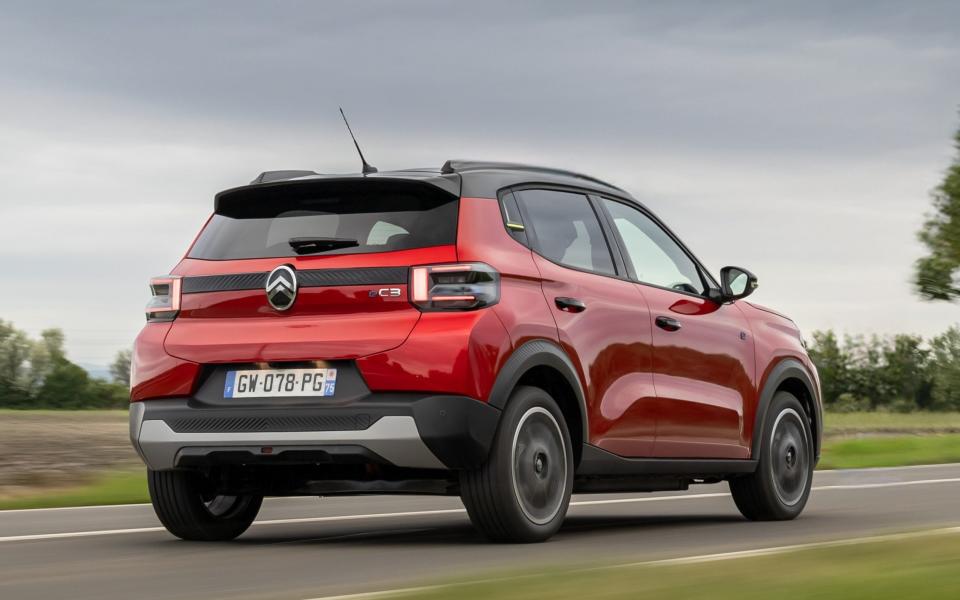
What about the Chinese?
Then there’s the question of Chinese makers flooding the markets for small EVs. Not so. Sino-car makers are far from stupid and have heeded well the words of Henry Ford II in the early 70s when confronted with initial designs for the Fiesta (“Small car, small profits,” he is reported to have said). So far from pushing tiny cars at the European market, the Chinese are contesting the 4.5-metre-plus family SUV market, where far richer pickings are to be had.
Then there is the battery technology, which allows Citroën to build this car in Europe at this price (indeed there is a 124-mile range version on the way, which is mooted to cost a whisker under £20,000). Lithium-Iron Phosphate (LFP) is a more robust and cheaper battery chemistry than the so-far-default Lithium-ion nickel manganese cobalt (Li-ion NMC) and it treads more lightly on the world’s scarce resources. We’ve even speculated that it might prove the sought-after chemistry in the non-premium small car markets, since it isn’t so damaged by repeated fast charging or harsh use. However it’s less energy dense, which means you need a larger car in which to pack the same amount of energy cells. It is also relatively slow to charge against the speed of the latest Li-ion NMC cells.
Looking good
So, is the C3 a good car? Would you choose it over, say a used Renault Zoe, a Dacia Spring, a new BYD Dolphin or even next year’s Renault 5 EV?
First thing is the appearance, which is superficially like every other crossover/SUV with its short and tall bonnet, high roofline and a vertical hatchback at the rear. All the better to maximise interior space within a short wheelbase. The ë-C3 is a more grown-up shape when you study it, however, and there’s interesting detail including the saucer-sized Citroën badges from the 100-year concepts in 2019, interesting roof shapes and rearmost pillars.
In addition to the 4,015-metre length, it’s 1,760mm wide and 1,570mm high, with a 2,540mm wheelbase. The boot is 310 litres, increasing to 1,250 litres if you fold the rear seat backs (they fold 60/40 per cent) onto their bases. The boot lip is high, though, so dog owners be warned.
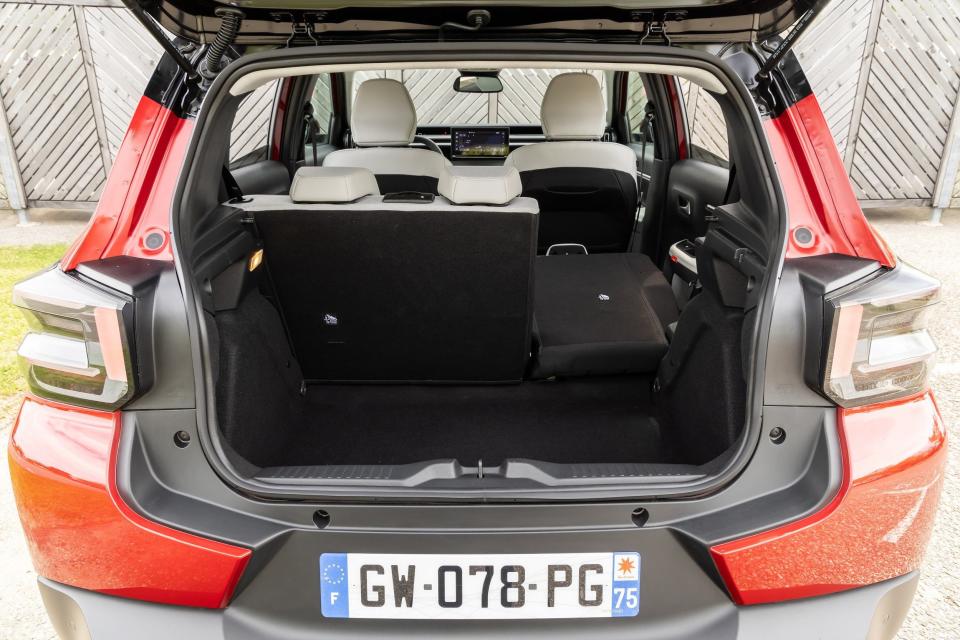
Smart Car platform
This “Smart Car” platform is all new and developed from the models that Citroen’s owner Stellantis builds for Indian and Latin American markets, where legislative requirements aren’t as stringent as those in Europe and the demand is for a simpler, cheaper individual transportation. Basically you start with the base car and build up to the top models rather than the other way around.
“We have learned how to reverse the engineering process from the base to the top,” says Laurence Hansen, director of product. “This is a simpler product containing 30 per cent fewer parts than an equivalent B-class car, so it’s cheaper to build – it’s a kind of disruptive engineering, we start from a lower level and build up.”
She explains that this approach was different from the processes more common across the many Stellantis marques but fits with Citroën’s aim to produce simple cars, along with the other current targets of being comfortable, daring and sustainable.
It’s about trying to serve the part of the market not well served by battery electric at the moment. Indeed, the television advertisement for the ë-C3, which plunders the French Revolution and David Bowie’s Suffragette City for inspiration, has the catchline: “Electric is no longer for the elite.”
“We find people won’t put more money into their electrification,” says Hansen, referring to the folk, particularly in France and southern European areas, who simply can’t afford an electric car.
French incentives
While the ë-C3 makes rival small EVs such as the electric Mini (from about £30,000) look expensive, at £21,105 it’s still pricey, especially considering how little a private buyer gets in the way of incentive in the UK. Compare that with the French approach.
Thierry Koskas, Citroën’s chief executive, reckons the current French subsidy starts at about €6,500 (£5,555), rising to about €9,500 (£8,120) to the less well-off, although at one time the poor in France were being incentivised to go electric to the tune of €13,500 (£11,540) – some bicycles are more expensive than that.
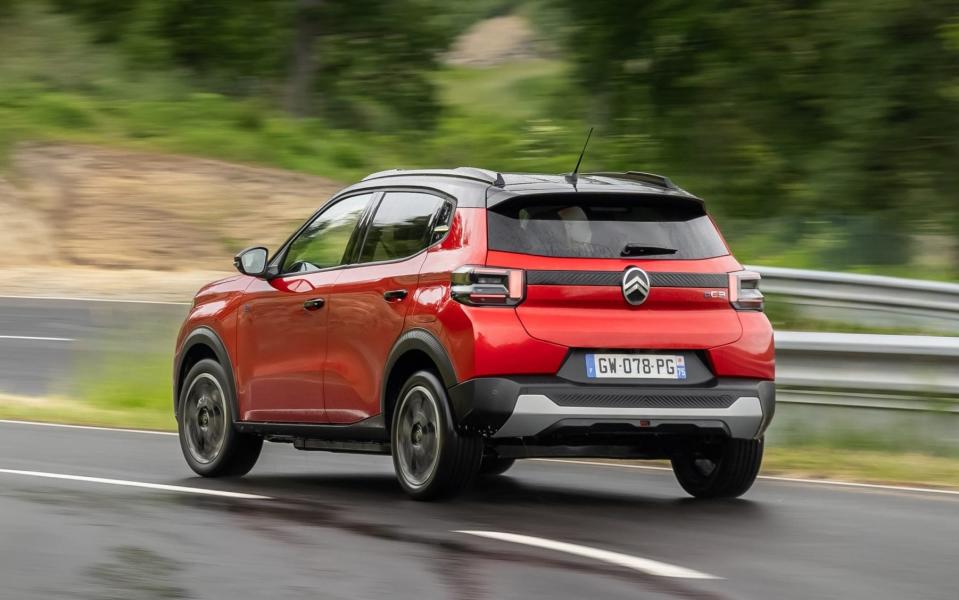
This is not just one model, of course. By the end of the year, Citroën UK will offer a lower-energy battery version (about 33kWh), which will be under £20,000, a petrol 1.2-litre three-cylinder turbo at £17,790 and a petrol-electric hybrid with a six speed semi-automatic transmission from £19,590.
There’s also a C3 Aircross due early next year, a 4.39-metre-long seven-seater based on the same platform, although there are no prices for this yet... I saw it at the ë-C3 launch and can attest that it’s a decent rival to Dacia’s seven-seat Jogger, which starts at £18,295.
As far as the ë-C3 is concerned, there’s no heat pump available (though to be fair LFP batteries are less susceptible to range issues in cold weather) and an 11kW AC on-board charger is a £360 option. It comes in two trim packs: Max at £21,105 and Max with a bit more equipment (including rear electric windows and automatic air-conditioning) at £21,935.
Driving experience
The interior presents a modern, well-thought-out space, with a 10.25in central touchscreen. Fortunately not part of the screen are the heater controls underneath, with proper buttons (as well as separate buttons to switch off the strident speed-limit warning and lane-keeping assistant).
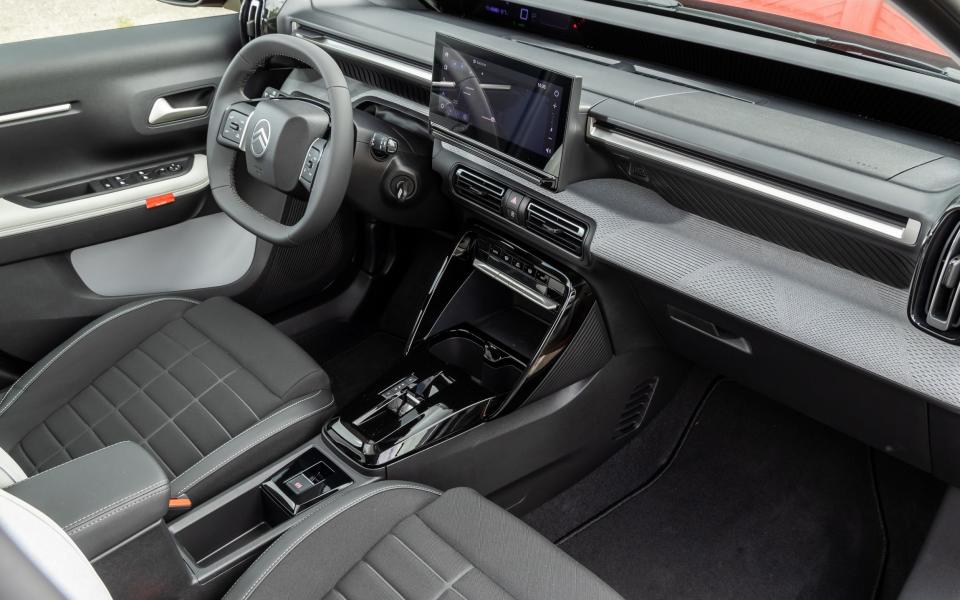
In addition, there’s a clever head-up display projected onto a darkened piece of glass in front of the driver. This is a brilliant piece of engineering, being clear and concise and apparently cheap, though Pierre Leclercq, Citroën’s design director, says his team “had to fight for it”.
The rear seats are cramped, as might be expected of such a small car. There’s plenty of head room, but if one six-foot adult is sitting behind another, then everyone has to squish up a little to accommodate knees.
With class standard MacPherson strut front and a twist-beam rear suspension, the little Citroën offers a trump card in its damping. Its special dampers have tuned hydraulic bump stops, which ease the piston at each end of its travel to provide finer body control and allow a softer ride quality without crashing over bumps.
The seats are well padded and attractive, though a little overstuffed; on a bumpy road, the soft suspension and plush seats have you gently bobbling up and down as if riding a camel. It’s not an uncomfortable sensation, just a bit weird.
So, too, the cornering, where the slightly vague steering and soft roll control has the nose pitching gently into turns and heeling over-enthusiastically, but the 17-inch tyres grip well and you can push it along with alacrity.

Old-fashioned comfort
It’s all fabulously French, in a nutshell. On a long test route taking in Austria’s well-manicured roads and Hungary’s rather less smooth surfaces, the ë-C3 was comfortable, cossetting and quite old-fashioned. I spent three hours behind the wheel and never felt tired, which isn’t something you can say of all the rivals.
There’s also a refreshing lack of complication. Simplicity, as any engineer will tell you, is often the result of quite serious and considered engineering design.
There’s no endless choice of varying amounts of regeneration braking, for example, just a C position on the gear lever which reduces the lift-off deceleration. Yet the brakes are an object lesson in combining friction and regeneration braking, with a progressive and seamless feel to the pedal that has just enough grab on initial application.

And if I’m not completely convinced by the oval steering wheel, at least with reach- and height-adjustment it can be arranged so you set the wheel high yet still see the main instrument binnacle. In that respect it’s much better than sister company Peugeot’s i-Cockpit, which is truly a Marmite proposition of steering wheel height.
The petrol version
I also managed to grab a couple of hours behind the wheel of the 98bhp, 1.2-litre three-cylinder, six-speed manual petrol version, which might be the closest competitor to the battery-electric (BEV), especially with so few incentives from the UK Government to help you stretch your budget an additional £4,200 for the electric version.
While in other Stellantis vehicles this engine can be boosted to 128bhp, in this application it feels perfectly suited to such a diminutive car, with plenty of torque to cover up the turbo lag and a six-speed gearbox which has a rubbery but light and positive shift quality. The top speed is 123mph and 0-62mph in 9.4sec, with fuel economy between 48 and 53mpg and CO2 emissions of between 123 and 130g/km, which means the first year VED is £220. On a modest route without much motorway work, I achieved 45mpg.
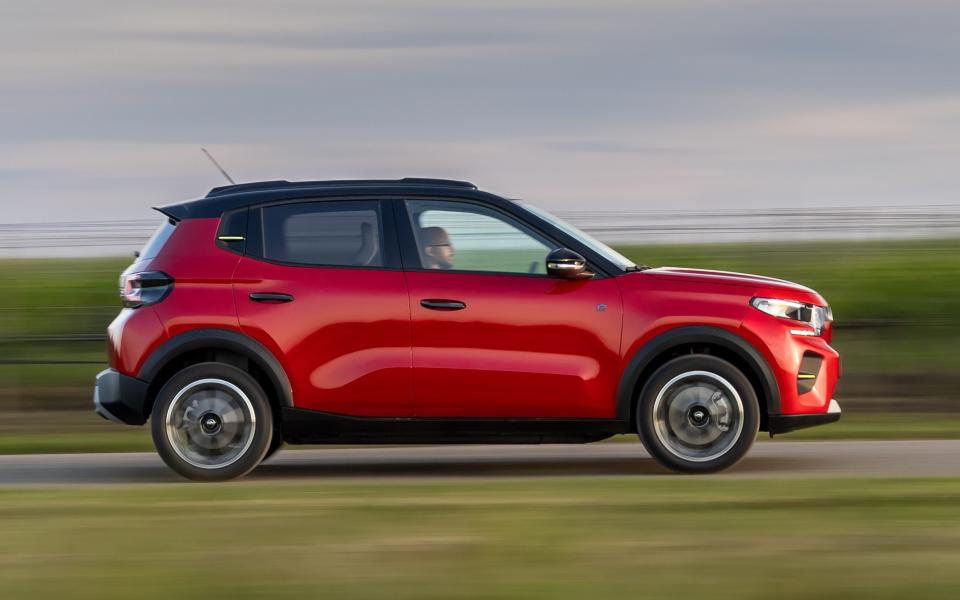
It’s a jolly thing to drive, too. At 1,090kg it has gained 90kg over the previous C3, but more importantly it’s 304kg lighter than the EV version and it shows, with a softer and more supple ride quality which gives the hydraulic bump stops a better chance to maintain body control.
The Telegraph verdict
Comfortable and fun, the ë-C3 has something of French rival Renault’s budget marque Dacia about it; appropriate technology, we used to call it. Its designers and engineers have learned from the cars they designed for less well-off folk in developing nations, but rather than merely aping those practices they have adapted them for more sophisticated European tastes as well as suiting them for Europe’s more stringent safety and environmental requirements.
And they’ve built it in Europe, which makes it arguably a more ethical choice than the cars bashed out in China and then offered to us by so-called legacy manufacturers.
It might not be the smallest of small cars, but if this is as small as it gets with a half decent range, then it will have to do.
Five stars then? I’m not going to stick my neck out until I’ve seen the industry-standard NCAP crash test results, but for the moment it merits a very comfortable four stars.
The facts
On test: Citroën ë-C3
Body style: five-door B-segment EV hatchback
On sale: orders open in July for delivery at the end of the year
How much? from £21,105 (£21,935 as tested in Max trim)
How fast? 84mph, 0-62mph in 11sec
How economical? 4.5mpkWh (WLTP Combined), 2.81mkWh on test
Electric powertrain: single AC electric motor driving the front wheels via a step-down gearing, 44kWh gross (43.7kWh useable) LFP battery, front-wheel drive.
7.4kW standard onboard charger, (11kW option) and up to 100kW DC fast charging capable of a 20-80 per cent charge in 26 mins
Range: 199 miles (123 miles on test)
Maximum power/torque: 113bhp/192 lb ft
CO2 emissions: 0g/km (tailpipe), 28.4g/km (well-to-wheel)
VED: £0
Warranty: three years/60,000 miles (eight years/100,000 miles for the battery)
The rivals
Dacia Spring
from £14,995
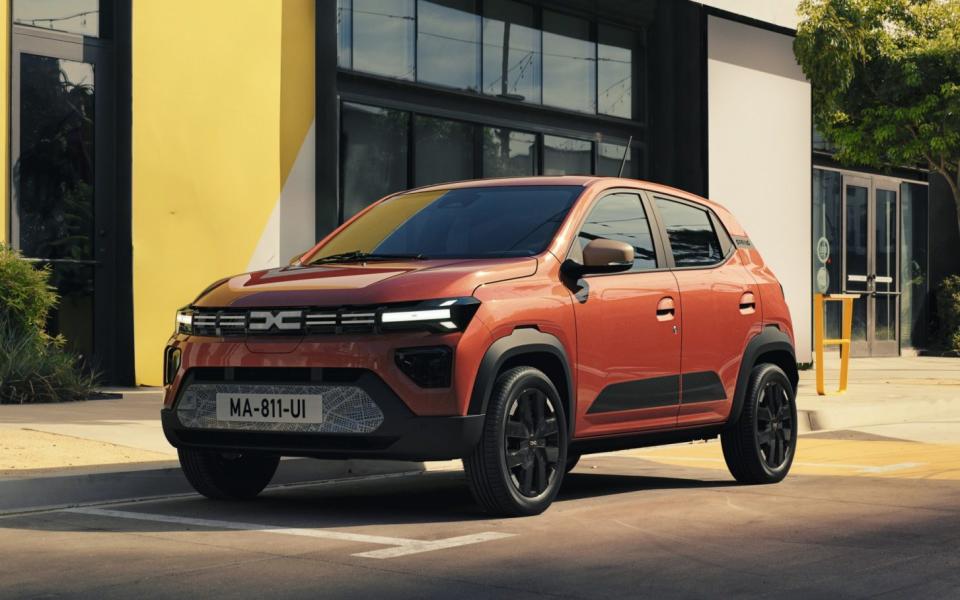
Already on sale on the continent, Dacia’s 3.72-metre-long city car is mooted to have a startling sub-£15,000 starting price. Light weight allows the 26.8kWh battery to give a WLTP range of up to 143 miles. There’ll be a choice of 44bhp and 64bhp drivetrains and up to 30kW DC charging, which gives a 20-80 per cent charge in 45mins. Chinese-built, with some noticeable cost-cutting (the steering wheel only adjusts for height, for instance), it’s smaller and less practical than the Citroen but you get what you pay for.
BYD Dolphin
from £26,195
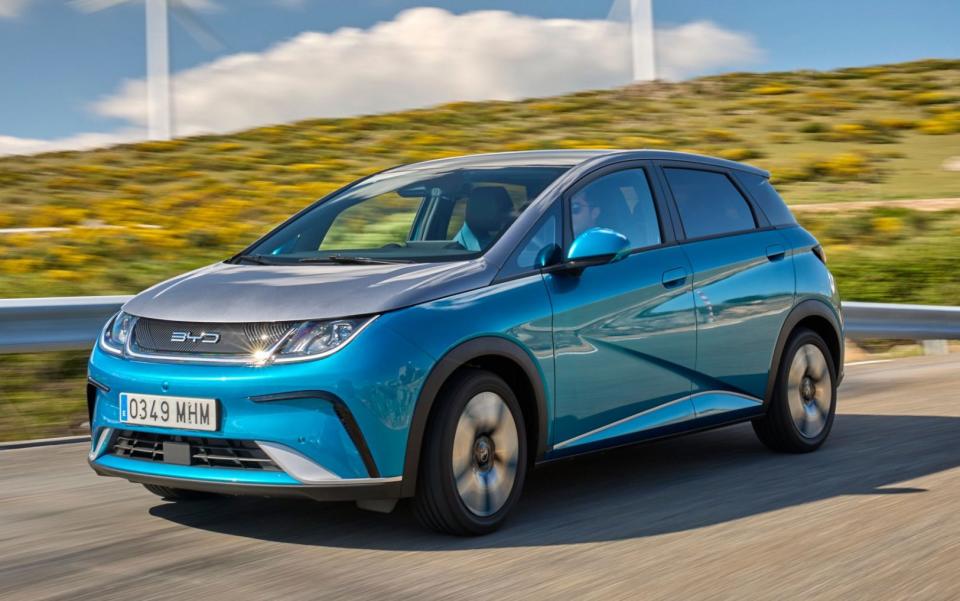
Larger (4.3 metres long) than the ë-C3 and more expensive, but this Chinese-built supermini is something of a bargain, with prices starting at £26,195 for the 192-mile 44.9kW battery version, with the 265-mile range 60.4kW version costing £31,695. It will accept 150kW DC fast charging and carry four adults, but the ride and handling aren’t up to much and the lane-keeping and driver-assistance systems are almost culpably aggressive.

